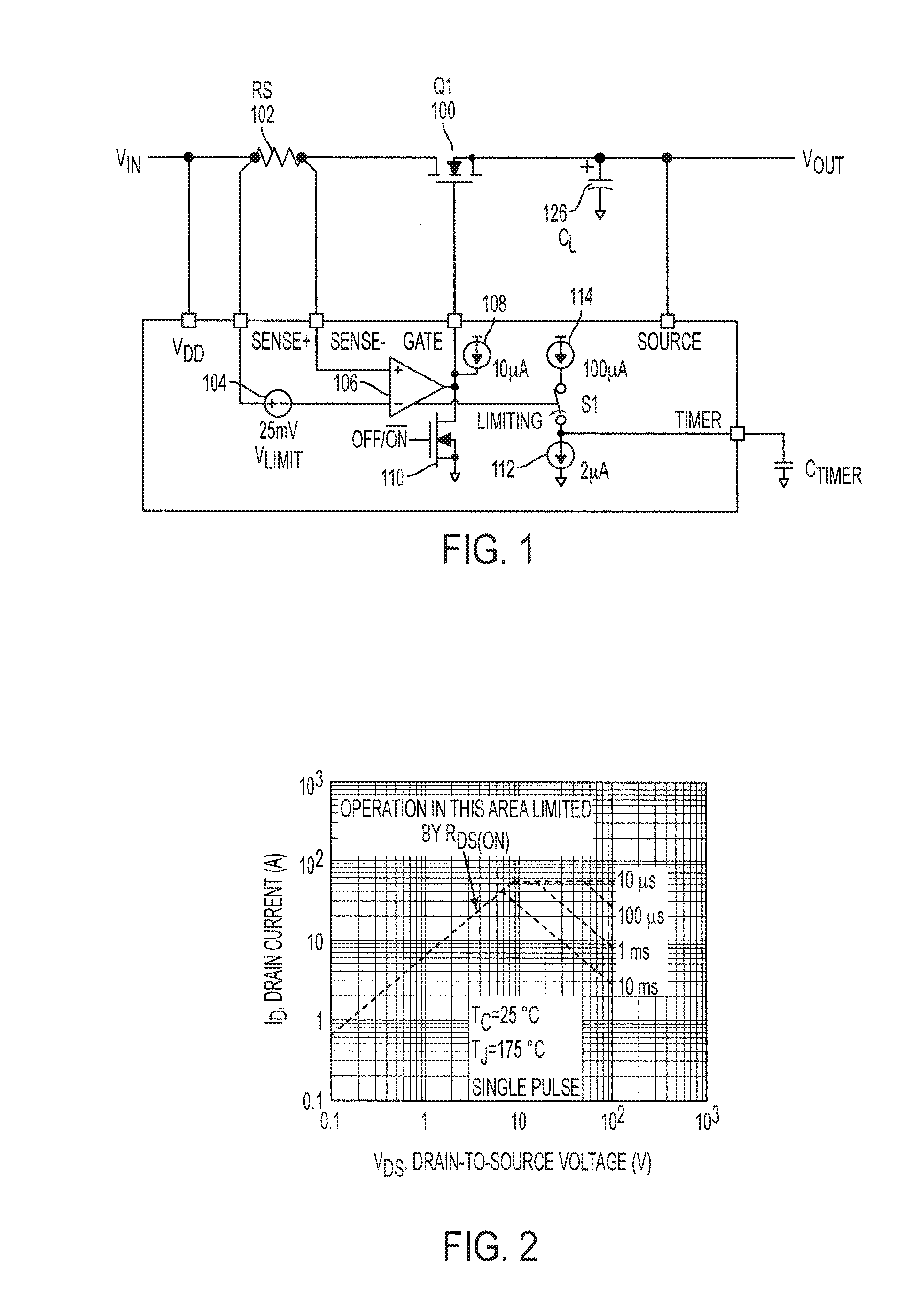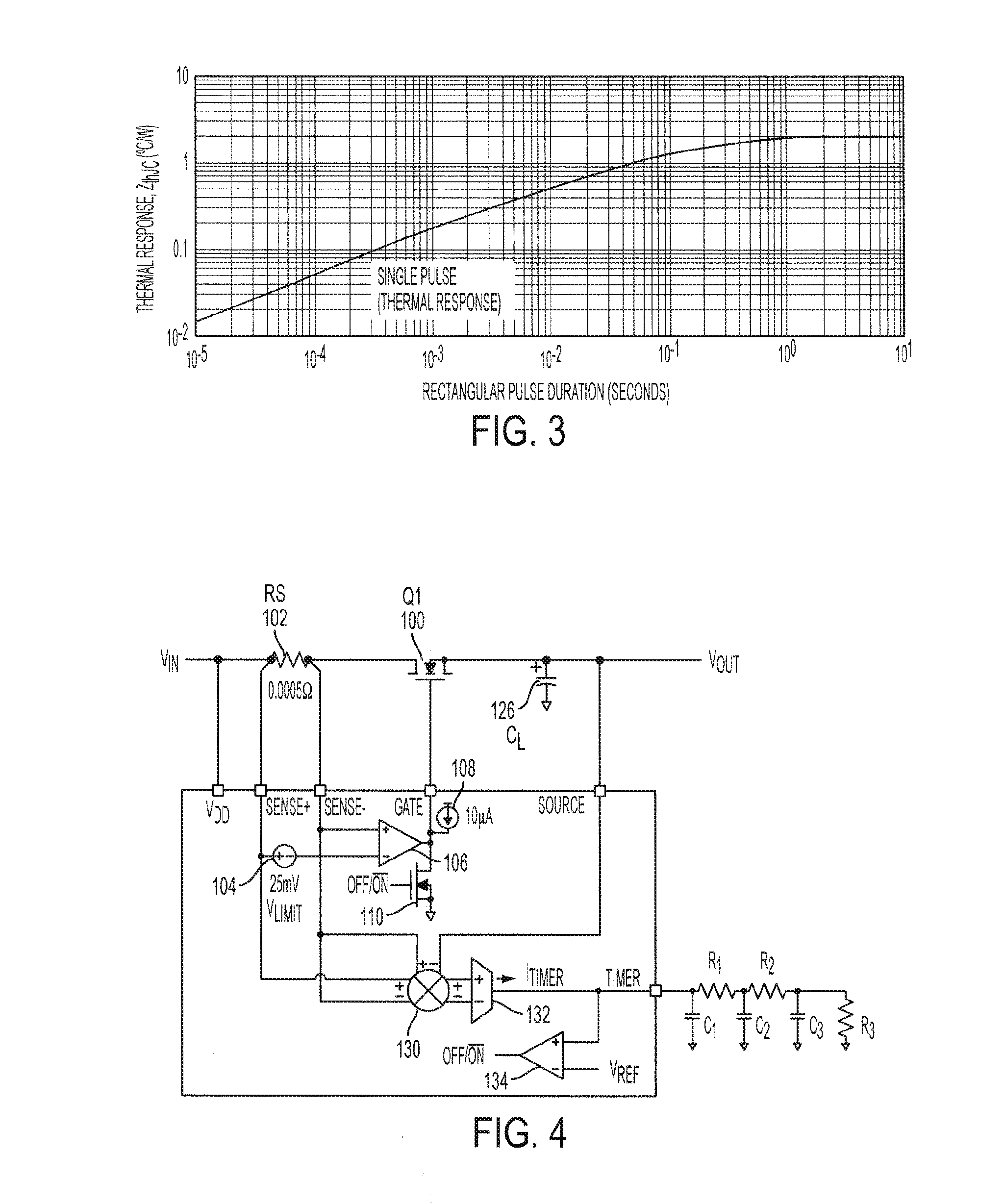Mosfet protection using resistor-capacitor thermal network
a technology applied in the direction of emergency protective circuit arrangement, electronic switching, pulse technique, etc., can solve the problems of long duration current-limit event, load loss, high power dissipation of mosfet, etc., to reduce the number of resistor and capacitor elements, reduce the cost, and model both short and long times accurately
- Summary
- Abstract
- Description
- Claims
- Application Information
AI Technical Summary
Benefits of technology
Problems solved by technology
Method used
Image
Examples
Embodiment Construction
[0033]The present disclosure provides a technique for ensuring that the safe operating area (SOA) of a MOSFET is not exceeded. Historically, the circuit designer has relied on a “safe operating area” (SOA) plot to judge the capability of the MOSFET. An example of the SOA plot reproduced from the Vishay IRF530 datasheet is illustrated in FIG. 2. Cost and physical size of a MOSFET are generally proportional to its SOA capability, so a designer would like to minimize the required safe operating area while safely powering up the output or riding through momentary overload events.
[0034]MOSFET safe operating area is limited by the maximum allowable junction temperature of the MOSFET die. In FIG. 2, the maximum junction temperature is specified as 175° C. when the case temperature is held at 25° C.
[0035]The SOA plot is usually derived from a MOSFET's “transient thermal impedance”. FIG. 3 shows an example of the transient thermal impedance plot reproduced from the Vishay IRF530 datasheet. G...
PUM
 Login to View More
Login to View More Abstract
Description
Claims
Application Information
 Login to View More
Login to View More - R&D
- Intellectual Property
- Life Sciences
- Materials
- Tech Scout
- Unparalleled Data Quality
- Higher Quality Content
- 60% Fewer Hallucinations
Browse by: Latest US Patents, China's latest patents, Technical Efficacy Thesaurus, Application Domain, Technology Topic, Popular Technical Reports.
© 2025 PatSnap. All rights reserved.Legal|Privacy policy|Modern Slavery Act Transparency Statement|Sitemap|About US| Contact US: help@patsnap.com



